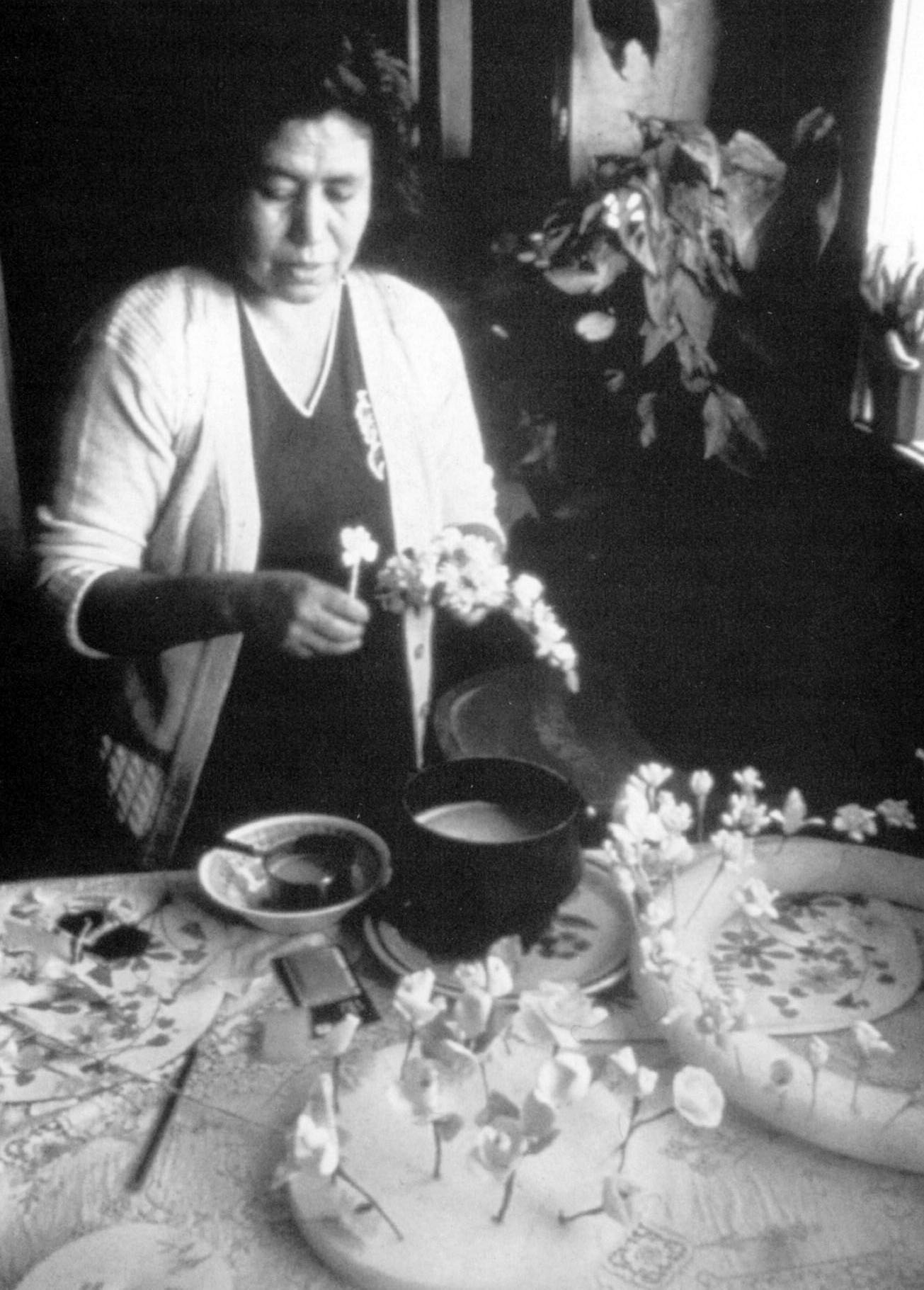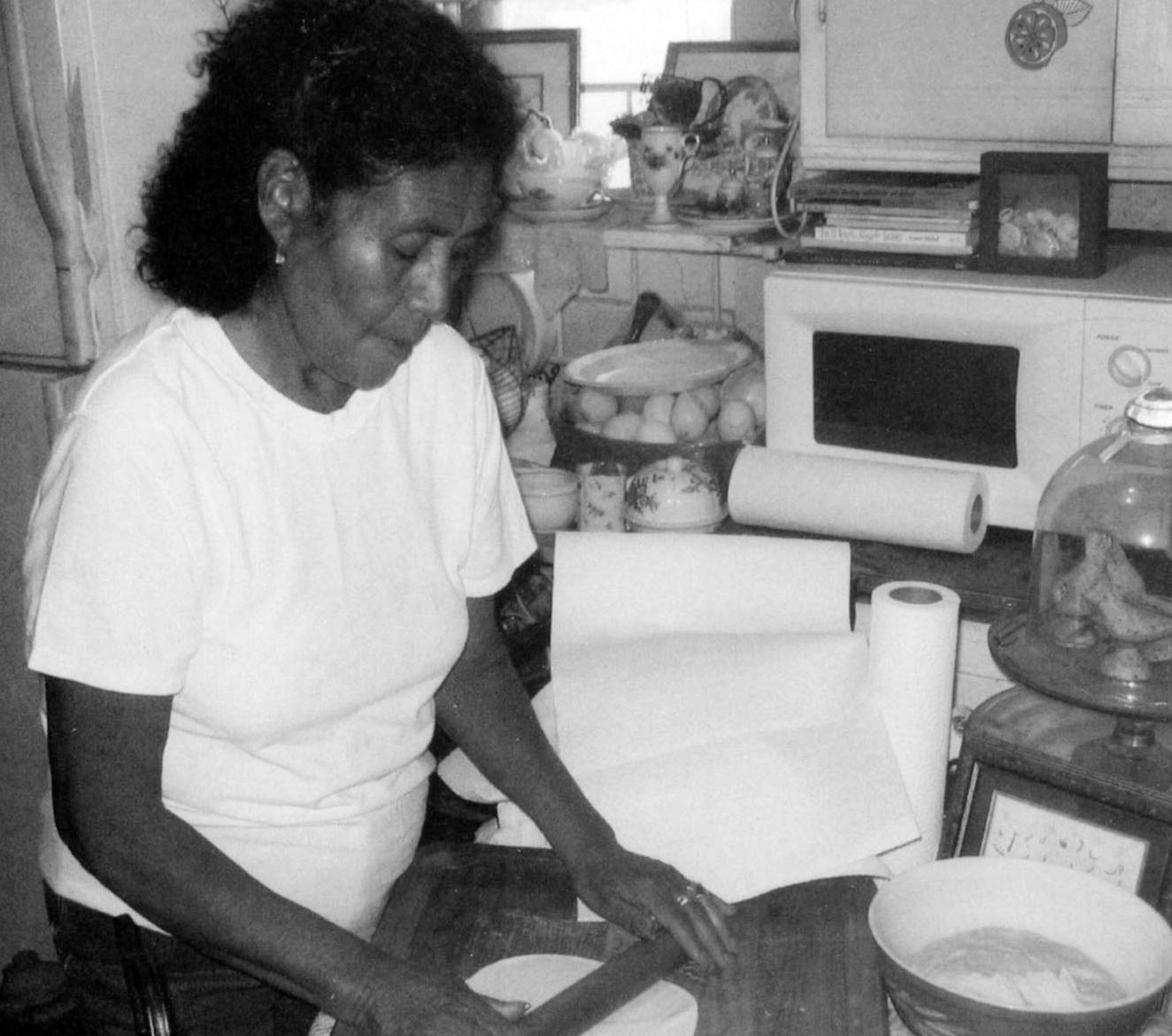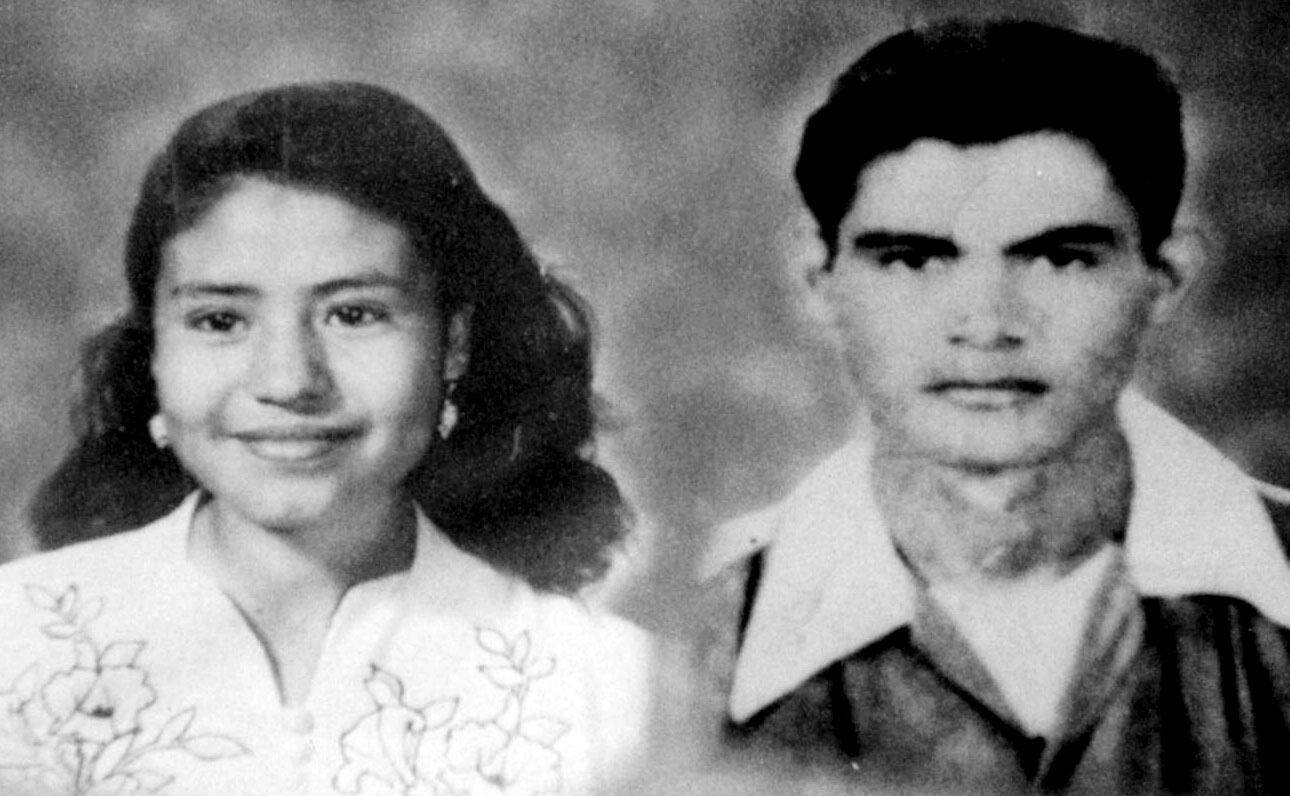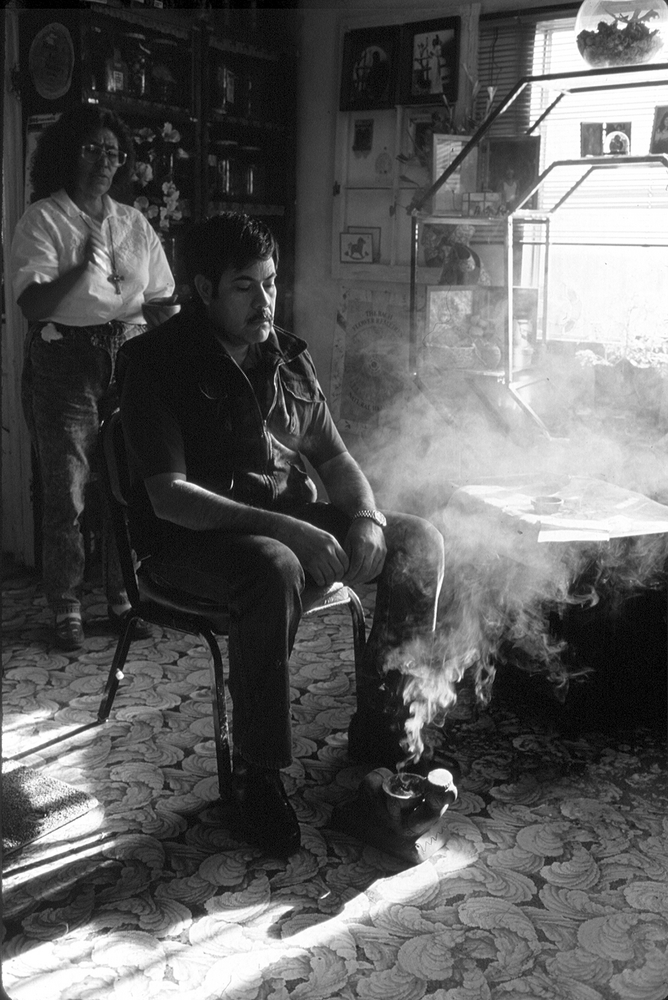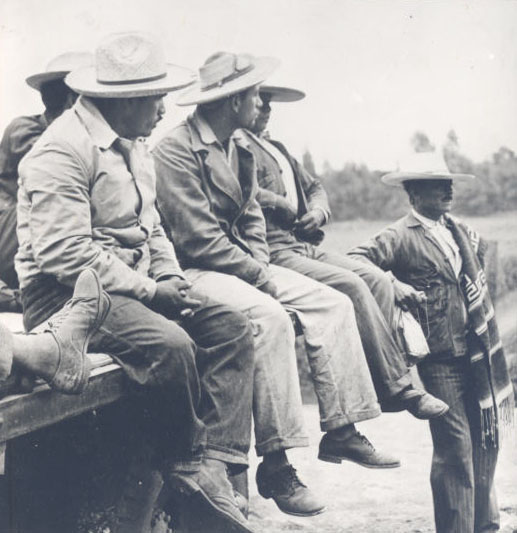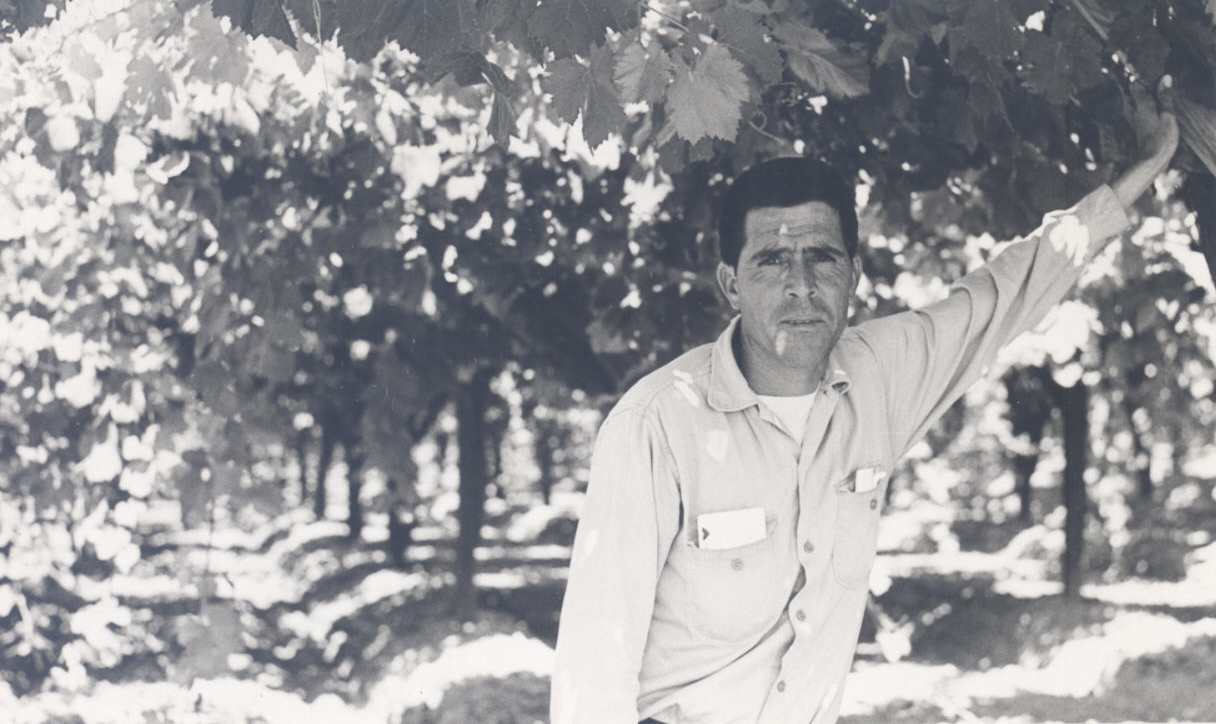Eva Castellanoz—traditional artist, curandera (healer), activist, and teacher—is a leading spokesperson for Oregon's Latino community. She received a National Heritage Award in 1989, has been the subject of Oregon and National Public Radio programs, and served on the Oregon Arts Commission from 1997 to 2001. Castellanoz has presented Mexican traditional arts at the Smithsonian Institution and now demonstrates them in libraries and community centers throughout the Northwest. She links the "roots" of culture to survival, arguing that "when the root is ruined, the limbs are sick, like our heritage that has been stripped and bitten away."
Castellanoz was born Genoveva Silva Juarez in Valle de Santiago, Mexico, on November 18, 1939. She was the sixth child of Fidel Silva, of Aztec heritage, and María Concepción Silva, an Otomí healer. At age three, Eva and her family moved to Pharr, Texas, after the death of her five older siblings from disease. Her father had already worked in the United States for many years before the 1942 bracero program formalized the influx of Mexican workers. Castellanoz's family shifted between Texas to Oregon before settling in Nyssa in 1957.
Castellanoz met and married her husband Teodoro in Pharr when she was fifteen. She arrived in Oregon pregnant with the first of nine children, whom she raised while working in the sugar beet and onion fields. During that time, she traveled to Mexico, where she saw an artist making coronas in the streets of Guadalajara. Inspired, she taught herself to replicate the wax and paper floral "crowns" central to weddings and quinceañeras (a young woman's fifteenth-birthday celebration). Castellanoz offers spiritual and practical advice along with the coronas, stressing gender equality and autonomy for women. Her teachings counter the increasing commercialization of this rite of passage in the U.S.
After the birth of her last child, Castellenoz was spiritually "called" to curanderismo, a healing practice that blends Spanish-Arabic and Indigenous Mexican traditions. She now serves middle-class Anglos and Latinos as well as migrant workers without health insurance. Castellanoz accepts payment for healing but she doesn’t have a set charge for her work because she believes that “healing is a gift.”
Castellanoz's years in the fields, struggling with poverty and other difficulties, engendered her activism. For over thirty years, she has worked with young people, including many gang members. She teaches art as a tool for personal and social transformation. The "root" of culture, she argues, can heal social dislocation and strengthen communities.
Despite wide recognition for her artistry and healing work, Castellanoz never forgets her own roots. Her commitment to helping immigrants springs from deep spiritual beliefs. In her words, "I am the woman who scrubs your toilet. I am the woman who picks your corn. I am the woman who stands in the factory line. I'm here and I look this way. And I, too, am the image of God."
-
![]()
Eva Castellanoz makes corona flowers out of crepe paper and hot wax, Nyssa, Oregon, 1989.
Oregon Historical Society Folklife Coll., S-1-339
-
![]()
Eva Castellanoz rolls out masa for corn tortillas in her kitchen, Nyssa, Oregon..
Courtesy Joanne Mulcahy
-
![]()
A composite photo of Eva and Teodoro Castellanoz..
Courtesy Joanne Mulcahy
-
Eva Castellanoz (left) in Nyssa, Oregon..
Oregon Historical Society Folklife Coll.
Related Entries
-
![Bracero Program]()
Bracero Program
The Mexican Farm Labor Program, also known as the Bracero Program, was …
-
![Latinos in Oregon]()
Latinos in Oregon
The arrival of Latinos in Oregon began with Spanish explorations in the…
Related Historical Records
Map This on the Oregon History WayFinder
The Oregon History Wayfinder is an interactive map that identifies significant places, people, and events in Oregon history.
Further Reading
Cantú, Norma. "Chicana Life-Cycle Rituals." In Chicana Traditions: Continuity and Change. Ed. Norma E. Cantú and Olga Nájera-Ramírez. Urbana: University of Illinois Press, 2002, pp. 15-34.
Gamboa, Erasmo and Carolyn M. Baun, eds. Nosotros: The Hispanic People of Oregon. Portland: Oregon Council for the Humanities, 1995.
Governar, Alan B. Extraordinary Ordinary People: Five Masters of Traditional Arts. Cambridge, Mass.: Candlewick Press, 2006.
Mulcahy, Joanne B. Remedios: The Healing Life of Eva Castellanoz. San Antonio, TX: Trinity University Press, 2010.
Trotter, Robert T. II, and Juan Antonio Chavira. Curanderismo: Mexican-American Folk Healing. Athens: University of Georgia Press, 1997.



